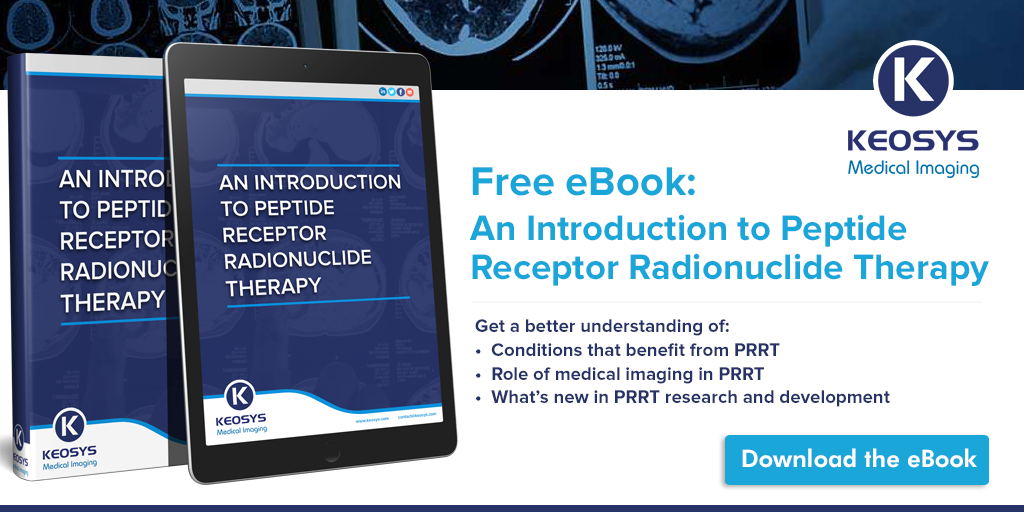Numerous elements of PET imaging are subject to variability, such as scan protocol, data processing and analysis methods. However, reducing variability as much as possible is essential for ensuring that the data acquired for the trial is accurate and robust.
In this blog post, we will focus on the scanner itself and the strategies used to reduce variability among scanners in a multi-center trial.
Why Cross-calibrate: The Importance of Quality Control
Quantitative imaging parameters, such as standardized uptake values (SUVs) and metabolic active tumor volume (MTV) are frequently used as imaging biomarker endpoints in a multi-center study. Implementing stringent quality control (QC) for all aspects of the trial can therefore provide confidence that such parameters are comparable among patients and sites, especially for longitudinal studies, irrespective of the PET system used.
For example, a study assessed SUV errors over time for six dose calibrators from two major manufacturers and for six PET (plus CT) scanners from three major manufacturers. The authors recorded errors in SUV measurements ranging from −20% to 47%. Moreover, bias in SUV measurements varied over time and between scanner sites.
As that study shows, cross-calibration of PET scanners across sites as a QC step is mandatory, as PET scanners are likely to have different manufacturers, technical specifications and usage according to local practices. QC of PET scanners can validate that the system is operating correctly, minimize the occurrence of artifacts, identify and resolve potential problems early and eliminate unnecessary repeat scans.
Guidelines for QC of PET Scanners
Several guidelines are available to help implement QC processes. For example, the Quantitative Imaging Biomarkers Alliance (QIBA) and the European Association of Nuclear Medicine (EANM) have both published guidance for quantitative FDG-PET imaging in oncology.
In the QIBA guideline, QC includes selecting and qualifying a PET imaging facility, imaging personnel and PET scanners and ancillary equipment. In the EANM guideline, QC and inter-institution PET system performance harmonization includes ensuring a standardized inter-institution calibration procedure to facilitate the exchangeability of SUVs between institutions.
Meanwhile, a recently published article provides practical actions, including a detailed checklist with parameters referencing the DICOM tag information, for this step.
How to Cross-calibrate PET Scanners
It might seem that the radiologist is the only one who would need to know about calibrating PET scanners. However, this process involves several stakeholders, including:
- Technical staff working for software and device manufacturers who create products for this purpose
- Biopharmaceutical companies, oncologists, and clinical trial scientists designing trials with imaging endpoints
- Radiologists, nuclear medicine physicians, technologists, and physicists designing PET acquisition protocols and acquiring measurements from the images
All these players need to understand the importance of ensuring that the scanner is acquiring accurate data, as well as what to look out for in the data to ensure that QC procedures have been followed. For example, to ensure comparability of SUVs, the minimum set of QC procedures recommended by the EANM include:
- Daily QC such as tuning of hardware and settings, which can typically be done semi- or automatically based on the manufacturer’s specifications
- Calibration QC and cross-calibration of PET system with the institution’s own dose calibrator or against a dose calibrator (e.g., that of an FDG provider) that is generally used to determine patient-specific FDG activities. This step is performed at least quarterly.
- Image quality and recovery coefficients. This step assesses that that the quantification of SUVs is accurate across measured volumes and should be performed at least quarterly
The QIBA guidance provides more detailed procedures, including a “Scanner Checklist” that can be used to ascertain a PET scanner’s qualification for quantitative imaging according to its guidelines.
Accreditation schemes, such as the one offered by EANM Research Ltd (EARL), or the Clinical Trials Network (CTN) Scanner Validation Program from SNMMI, are available to provide further confidence that a site is suitable for a clinical trial using PET-based imaging biomarkers as an endpoint.
Challenges of New Technologies and PET Calibration
Recent developments in PET technology, such as time-of-flight and resolution modeling during reconstruction, point spread function reconstruction, digital PET detectors and integrated PET/MRI systems, are leading to efforts to ensure that standards across sites are harmonized.
Care must be taken to ensure that the quantification of the imaging biomarker (be it the SUV or MTV) is comparable across systems. Some might question whether it is possible to balance optimization (i.e., technological advancements) and harmonization (i.e., cross-calibration of different PET systems across multiple sites). A recent editorial suggests that it can be possible.
Navigating the maze of imaging in clinical trials can seem overwhelming. Our operational experts can help in all aspects, including whether the site is equipped with the appropriate hardware and processes to manage images as per regulatory recommendations.




